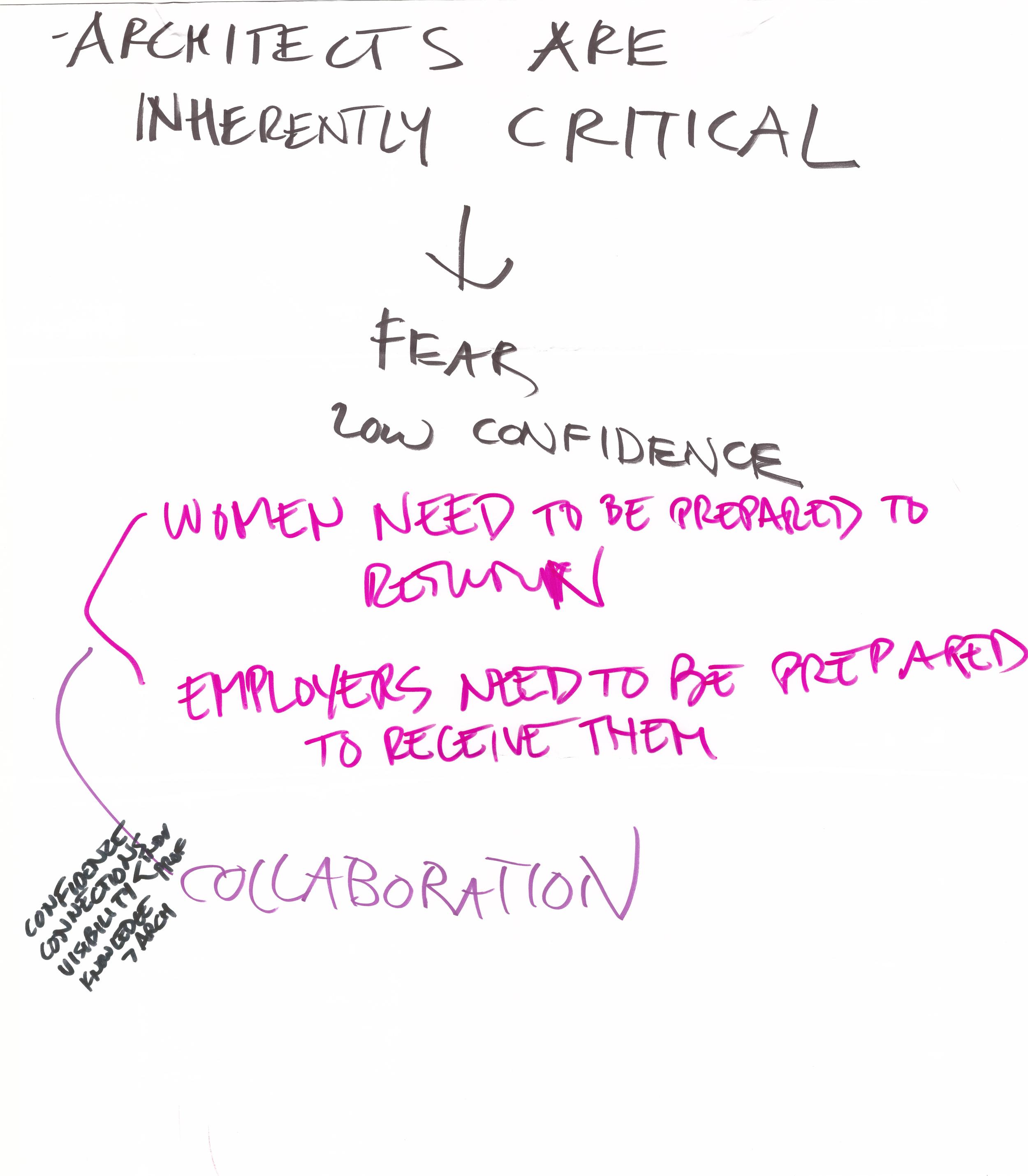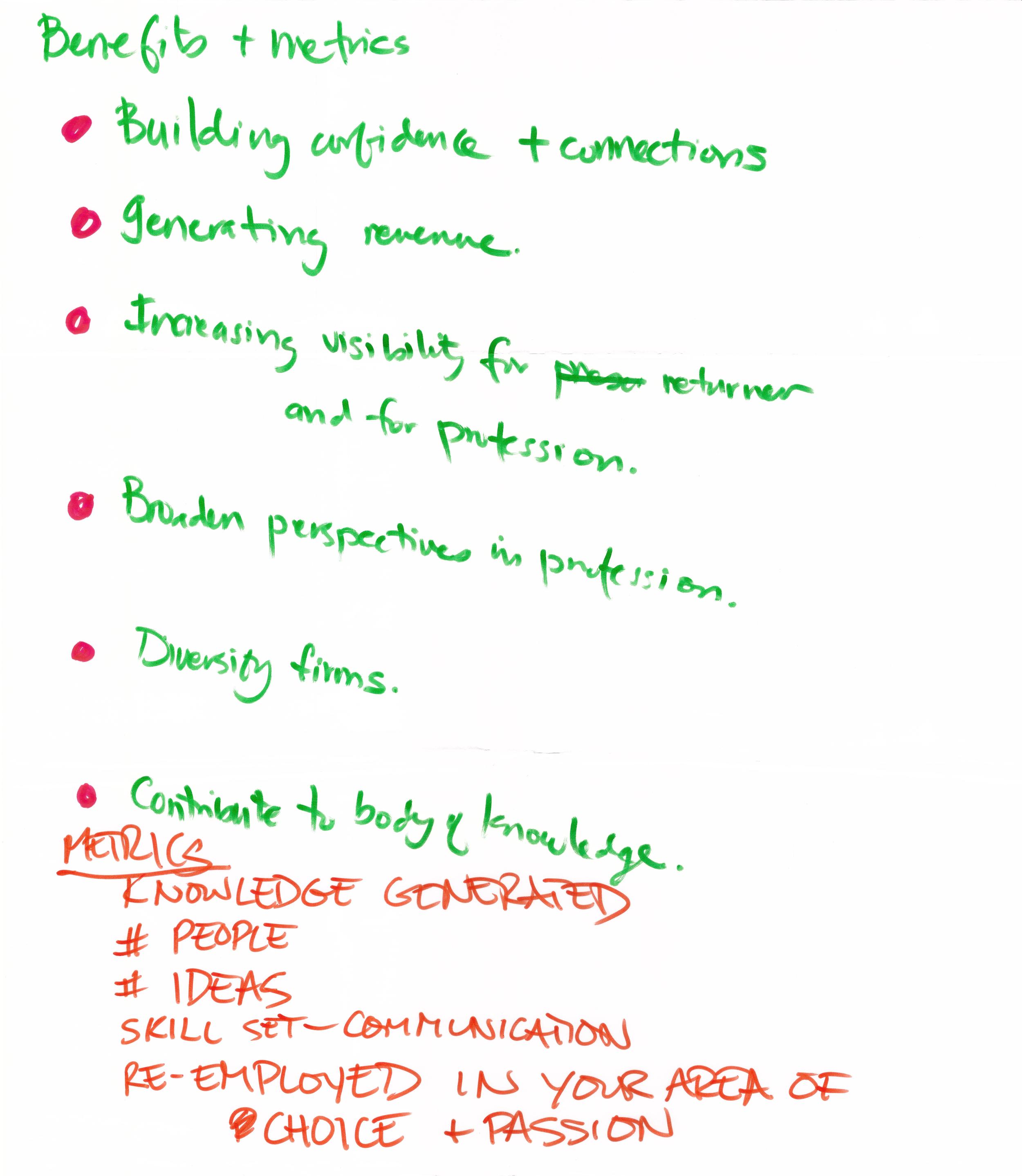by Karen Robichaud
Our group “hacked” the subject of Hiring and Retention, with a focus on in-group favoritism and implicit bias.
Defining the Problem
When we look at the classic pinch points in an architect’s career that often drive one away from their firm or out of the profession, what we saw was a tendency for firms to hold on to past practices. Often these past practices haven’t fully adapted to the needs of today’s workforce, so how can we puncture those strategies and move forward?
Hacking Ideas for Hiring and Retention
As we discussed issues of in-group favoritism and implicit bias, what really rose to the top was the importance of intentionality. Diversity, inclusion and engagement don’t happen by accident. Our conversation circled around the urgent desire for a shift in culture towards intentional inclusion, transparency and open dialogue. The business case for increased diversity is clear; diversity improves employee retention and recruiting. As we each shared our experiences, what we noticed is that we (as a collective culture) have an awareness problem. Often people don’t even know their behavior isn’t inclusive. What we determined is that firms and the profession need a person or persons in a role committed to change, raising awareness and cultivating an environment in which calling out bias when it happens. All those are tough things and require fearlessness. We landed on the term “agent of change” or “change agent.”
A change agent is an individual or group of individuals within an organization using his/her/their talents and position to enhance the corporate culture and create a more inclusive environment – calling attention to the talents of all types of people. This can be part of beyond the scope of that person’s primary role.
Part of the point of naming the role and owning it is to hold firms and the profession accountable to the commitment. A change agent keeps the conversation going, often at a fever pitch so that it cannot be ignored. When we are striving to transform culture, we are never done. That’s why it’s hard – there is no tidy “to-do” list with boxes to check. We all need to reflect and assess and sometimes we need reminding.
"Change Agent" Team Members: Karen Robichaud, Matthew Gaul, Gabrielle Bullock, Rebecca Sibley, Ashley Banks
Additionally, by naming change agents, they can create a network among themselves to report progress, strategize and bring ideas back to their firms. What we saw as the crux of the challenge was a need for bold action. I come from a theatre background and one of my directors always said “be bold, be daring, be brave” and that’s what is needed here. Change doesn’t happen overnight, but with commitment, intention and accountability, it starts to happen.
READ MORE ABOUT WE310 EQUITY BY DESIGN HACKATHON RECAPS
- #BUILDYOUrtribe – Equity by Design Hackathon 2015 Winners
- When Working Hard Hardly Works
- Promotion and Advancement: How to champion the Pull.
- We need to Hack more!
- I am not an Architect
- How does going to a Hackathon make re-entry easier?
- Interrupt workplace bias, be a "Change Agent"
- Reflections from the EQxD Hackathon Jurors
- Conscious Inclusion: #BUILDYOUrtribe
What's next for EQxD?
Join us in San Francisco at AIASF on June 11th for our next EQxD "U" Workshop "What's Flex got to do with Success?" (Win Win Strategies for Work/Life Flexibility) Meet the panelists, and participate in small group break-outs to "hack" what works for flexibility in the modern workplace. This event is relevant to all AEC professionals! 6pm-8:30pm.













